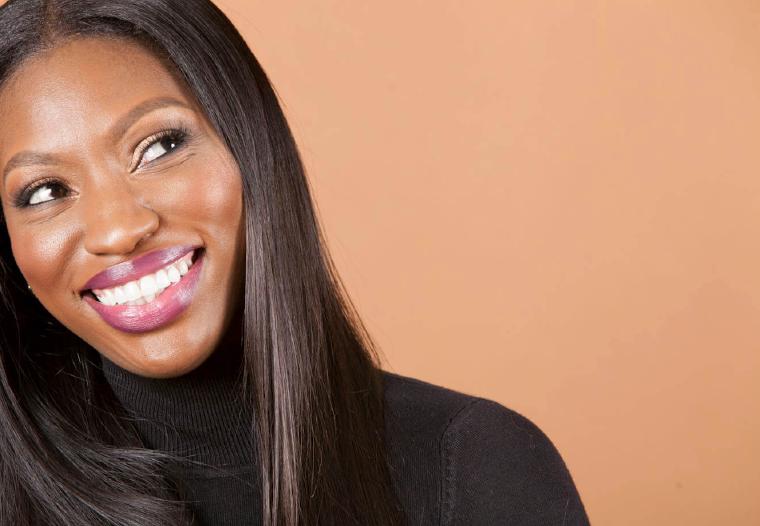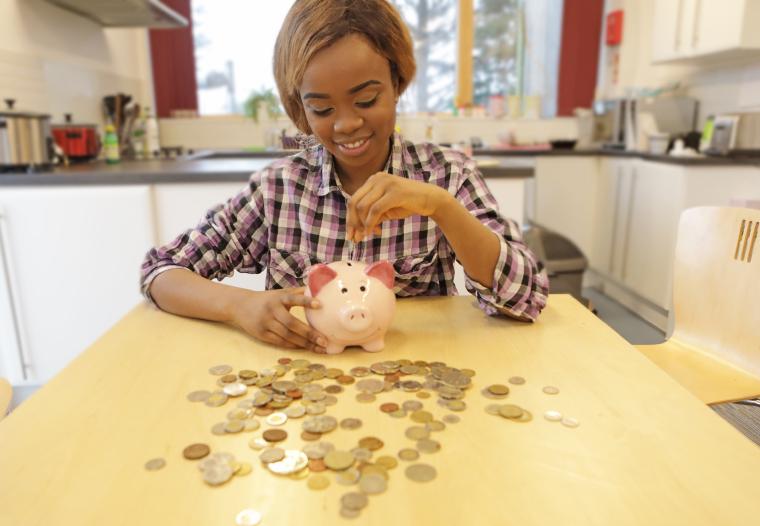- Saving
- Money Management
Savings 101: How to Quickly Hit Your First 1k in Savings

Real talk: we all heart money and want to save more. However, even when the intention is there, so many of us find ourselves paying bills, buying groceries, and livin’ it up with whatever’s left of our paycheck. But if the year 2020 has taught us anything, it’s that life is unpredictable, and we need to be prepared and protected for the worst. And, as Kendrick Lamar says, “money trees are the perfect place for shade.”
Temptations are all around us, enticing us to hand over those dollar bills — salons, online shopping, copping the latest limited-edition sneakers. But in order to build a safety net, we need to remain unwavering in our commitment to save every. Single. Day.
It’s time to start growing your money tree. So when (not ‘if’) the world shuts down again, or another emergency has you shook, you’ve got the most potent tool in your pocket — your savings. Let’s make it a goal to hit $1K in savings over the next several months. A stack is just the start, but it will give you solid footing in the game, which you can then use to build even more wealth.
Tip #1: Don’t Do It Alone
If you’re a self-motivated go-getter type of person who believes in no excuses, no complaints, just hustle, then good for you. More power to you! But, sometimes, it takes a community to reach financial goals.
Why not hold yourself accountable to your goal by getting help from your people? It’s called a “Money Buddy”- pairing up with someone who has a similar financial goal as you. You may decide with your Money Buddy, that you want to save your first $1,000 in the next 6 months. For this, you will have to save about $45 per week.
At the end of each week, call or text each other to check in on progress and make sure that $45 has been transferred to a separate account (out of sight, out of mind!) This is a fantastic way to prevent impulsively buying the just-dropped $50 eye shadow set that everyone is raving about on Insta.
Tip #2: Don’t Fall Into the Emotional Spending Trap
We all got our bills to pay — that’s out of our control. Rent, utilities, car insurance? Those are payments we need to make regularly. But there’s this other group of spending that is in our control. They aren’t bills, but frills — and often, we don’t even realize how much the frills are holding us back from what we really want in life: happiness, stability, confidence, and financial security.
Keeping emotional and impulsive spending to a minimum could help you reach $1K in savings much faster. That said, we are human. As emotions change, you’ll always have urges to drop a few hundred on the next thing that takes you out of your present discomfort. Here are some ways to tackle it:
- Find a distraction: Engage in a diversionary activity to relax when going through a phase of emotional volatility. This could be going for a walk, taking a bubble bath or a long steamy shower, or calling a friend to catch up.
- Do the math: Get a pen and a paper and walk yourself through how many hours you had to work to make the amount of money you want to spend. Is the thing worth doing overtime for three days? The answer is more than likely a big fat ‘No.’
- Do a digital clean-up: Unfollow social accounts (both brands and people!) that might be influencing you to spend more. You can also unsubscribe from marketing emails – “flash sale” and other discount emails that are designed to manipulate you into spending on things you don’t need.
Tip #3: Don’t Beat Yourself Up
The first rule of saving money is never to lose money. But everyone screws up — maybe you loaned money to your friends who haven’t paid you back, perhaps you stopped at Starbucks for a Pumpkin Spice Latte or ordered take out after a long work week. All of a sudden you realize $100 has “disappeared” from your account.
But like Gucci Mane says, “if you keep looking back, you gon’ trip going forward.” In other words, if you keep dwelling on what you’ve lost in the past, you’ll keep repeating history. So, it’s crucial to regain control and bounce back from the financial missteps as quickly as you can. Here are some tips to recovery:
- Try to undo: Some mistakes can be reversed. If you spent money on items, see if you can return them. If you can’t, then try reselling to recoup some of the loss (if meeting in-person, be sure to do so at a public location). Just bought a gym membership that you know was a spur of the moment decision? Cancel the contract before the grace period is up. Your first step after realization hits that a mistake has been made should always be to undo it if you can.
- Detect the trigger: The goal should never be to make the same mistake twice because the second time you make it, that’s a choice. Check in with yourself and figure out what caused you to spend money on something you regret. For example, while out with your girlfriends last weekend, you bought a dress you don’t need. Ask yourself the reason for your decision. Maybe you bought it because everyone else was buying something and you didn’t want to stand out or feel broke. If this is the case, then you can chalk your decision to peer pressure. And in the future, you can make a conscious decision to stand your ground and not give in to the pressure or avoid putting yourself in situations where you feel that way.
Hit $1K in Savings? Congrats! Now Double Up.
The path to your first $1K will teach you plenty of good financial habits. Stay tight with these habits because they will take you far in life. Continue using them to double, triple, quadruple your savings. You’re in the black now, but there are even bigger goals to conquer.
So, keep going! The journey to financial independence never stops. Make every dollar count by reducing expenses through:
- Canceling subscription services that you don’t use or need (those $12 per month subscriptions add up!)
- Eating home-cooked meals
- Working out at home
- Using discounts and promo codes when online shopping
- Cutting the cable (this can easily save you over $1,200 in a year)
- Stashing away all the dollar bills and loose change that you’re left with at the end of the day into a mason jar or shoebox
- Selling items that you aren’t using. If meeting in person, be sure to do so in a public location for safety.
That first $1,000 will give you the kind of confidence and financial security that you didn’t have before, but remember that it’s a starting point to reach more significant milestones of prosperity. Keep saving and give yourself the financial wings to start leveling up in life.



